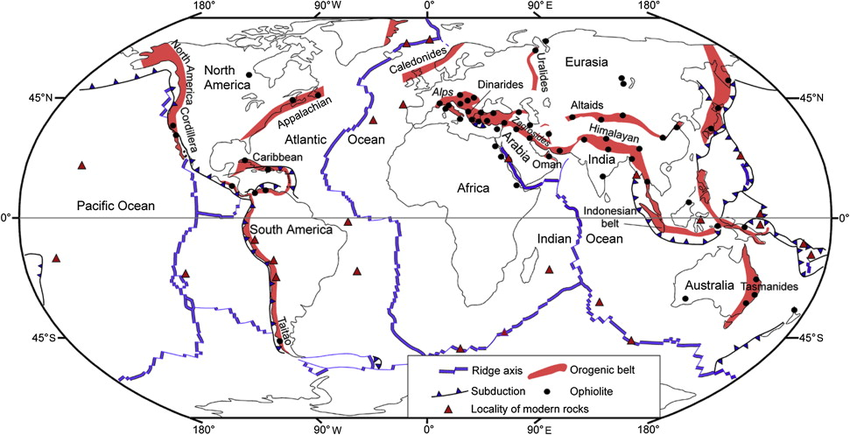
The Earth's most common elevation is sea level - and yet, most of Earth's surface lies below sea level - FAR below sea level, at 4-6 km depth.
Why?
The answer is a combination of #platetectonics and Earth's oceans. 1/9
#tectoplot

Why?
The answer is a combination of #platetectonics and Earth's oceans. 1/9
#tectoplot


You might think that the oceans are just parts of the land that are covered with water. Actually, that's really not the point - the oceans are there because the rocks *below* the oceans are fundamentally different from those below continents - and it's all because of magma! 2/9
Below the crust, the mantle is convecting. This is driven by heat given off by radioactive delay deep inside the Earth.
The mantle is solid rock - but every now and then a pocket melts: due to the addition of water, release of pressure, or extra added heat. Magma! 3/9
The mantle is solid rock - but every now and then a pocket melts: due to the addition of water, release of pressure, or extra added heat. Magma! 3/9

Those little pockets of melt are where all the action happens. As the magma cools, certain minerals will crystallize over time - and depending on their density, will either float to the top, or sink to the bottom. 4/9 

Over the billions of years of Earth's evolution, this process has filtered lighter elements upwards. These accumulate at the surface, and stay there - because they are too light to sink back down & convect.
The continents? Just ancient pond scum - up to 4 BILLION years old. 5/9
The continents? Just ancient pond scum - up to 4 BILLION years old. 5/9
Oceanic crust is just a baby in a comparison - some literally forming today - like in the center of the Atlantic - getting progressively older as it moves away from the spreading ridges.
As it ages, it cools, gets denser, and eventually starts to sink back into the mantle. 6/9
As it ages, it cools, gets denser, and eventually starts to sink back into the mantle. 6/9

Continental crust is low density and old. Oceanic crust is dense and young. And just like how icebergs have deep roots, continents do too - the extra mass above is balanced out by the lower mass of the root. This is the principle of ISOSTASY: equilibrium of crustal mass. 7/9 

So that explains the double-peaked curve. But it still leaves one question: if the oceans aren't important to the curve, why the peak at sea level specifically?
Okay, so I lied. Of course the ocean are important. 8/9
Okay, so I lied. Of course the ocean are important. 8/9

The oceans don't cause the double peak, but they DO cause grading to sea level. Rocks at high elevations erode, are carried to the sea by rivers, and are deposited there. If the sea level rose or fell, the higher peak would follow. 9/9
doi.org.remotexs.ntu.edu.sg/10.1086/671392
doi.org.remotexs.ntu.edu.sg/10.1086/671392

• • •
Missing some Tweet in this thread? You can try to
force a refresh













